2015
12 copies
Signed and numbered
12 copies
Signed and numbered
Slipcase:
35,4×26,5×13,7 cm
13.9×10.4×5.3 in.
35,4×26,5×13,7 cm
13.9×10.4×5.3 in.
5 books
Digital printing, letterpress, coil binding
Unique Jacquard slipcases
Digital printing, letterpress, coil binding
Unique Jacquard slipcases
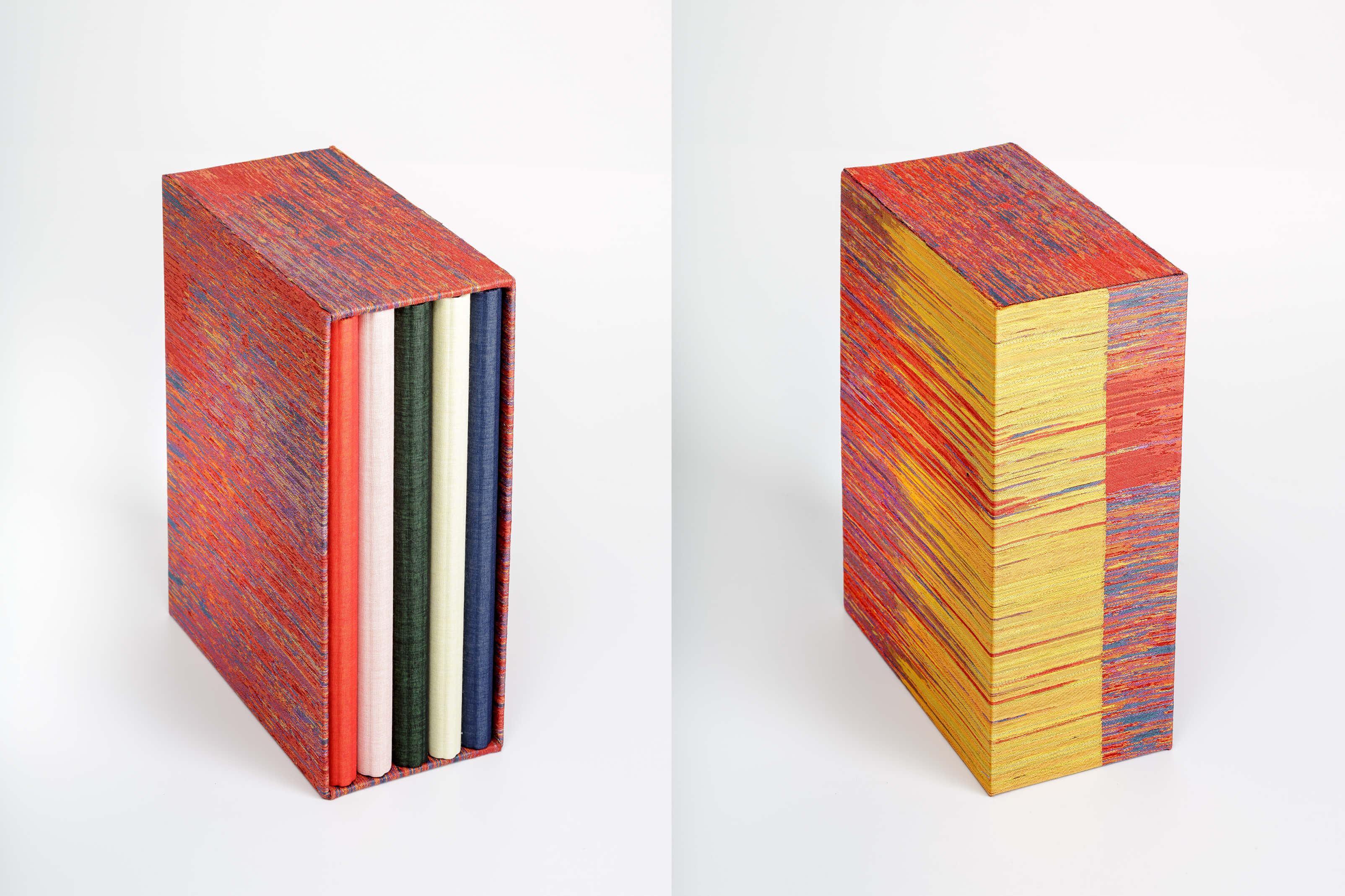
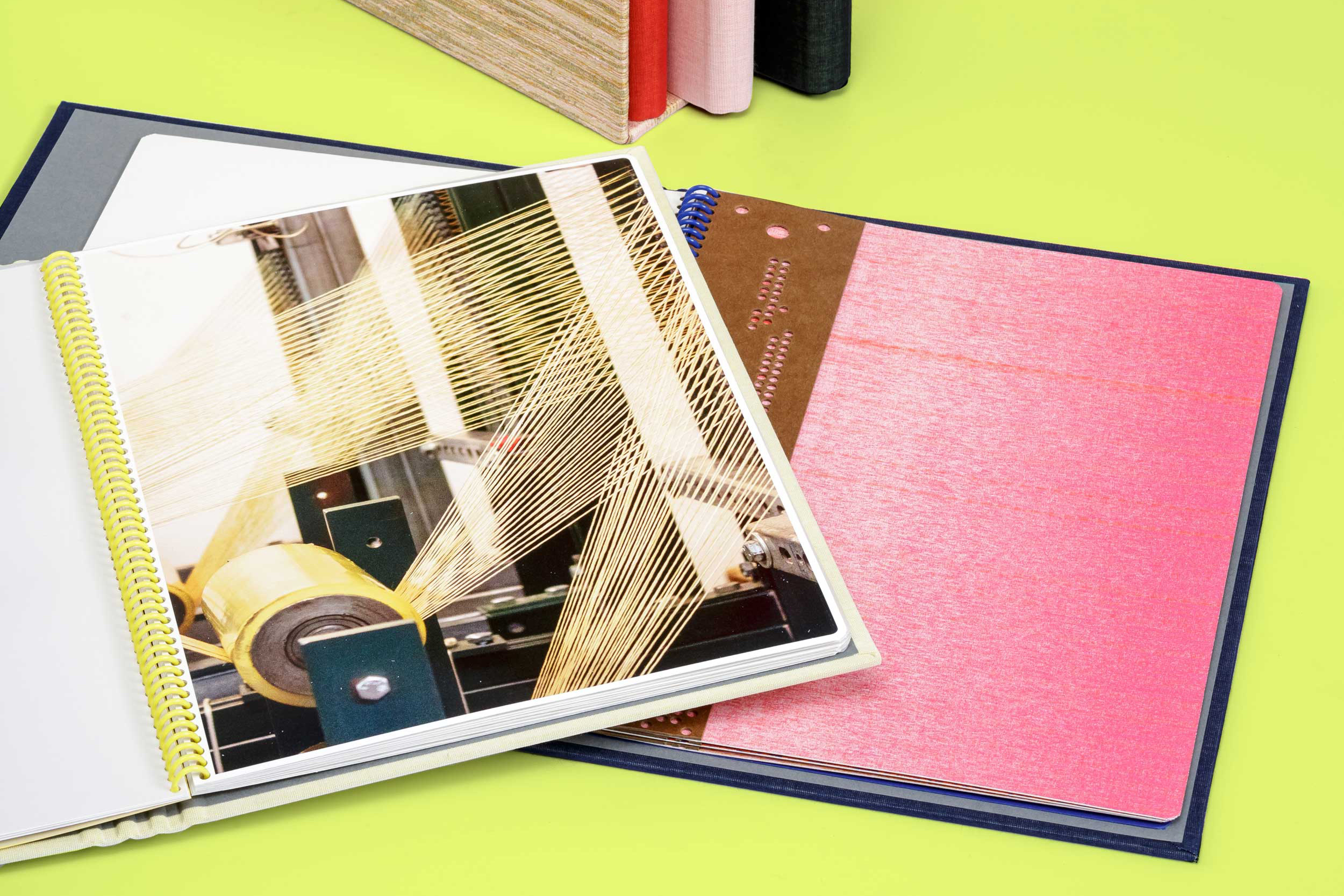


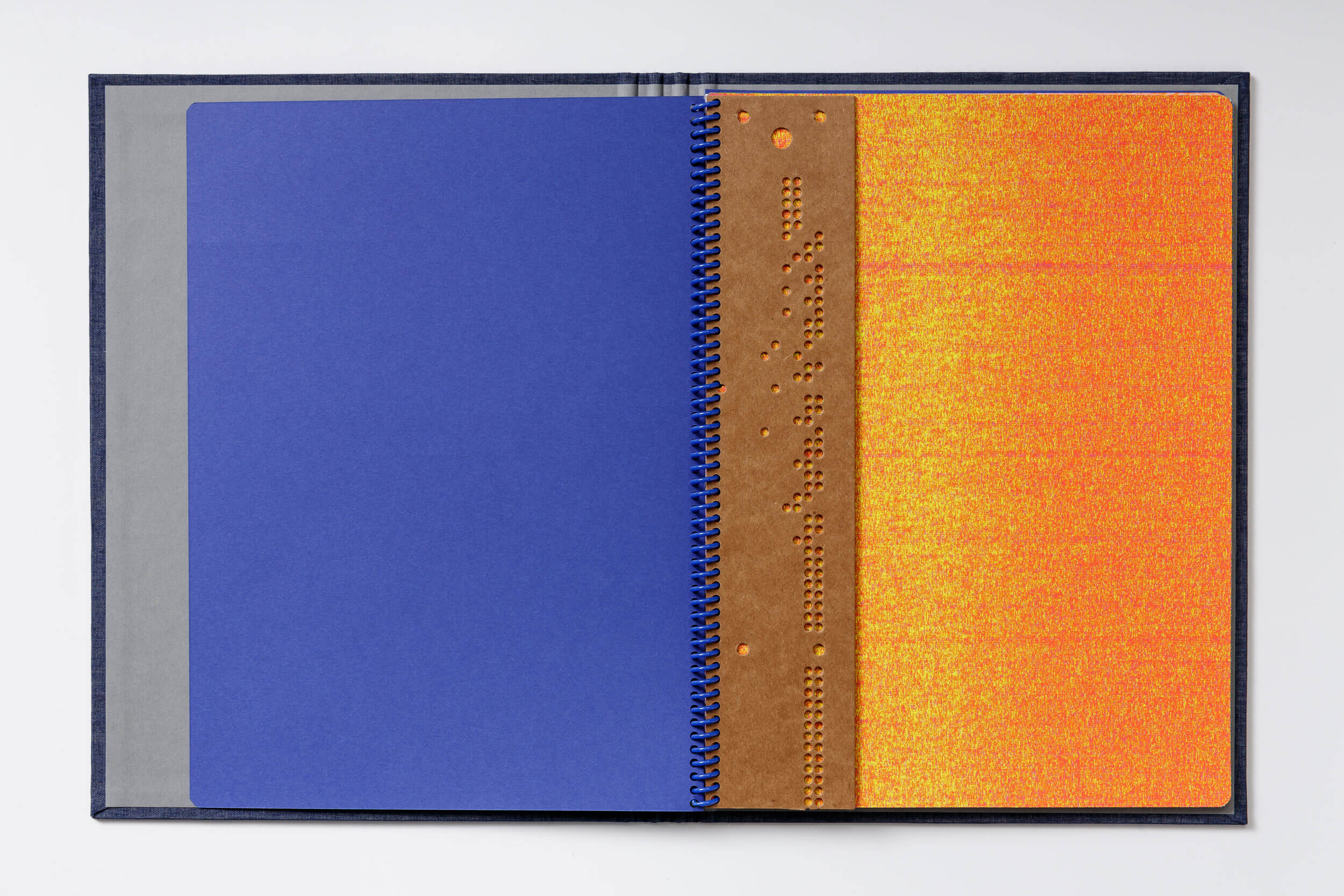









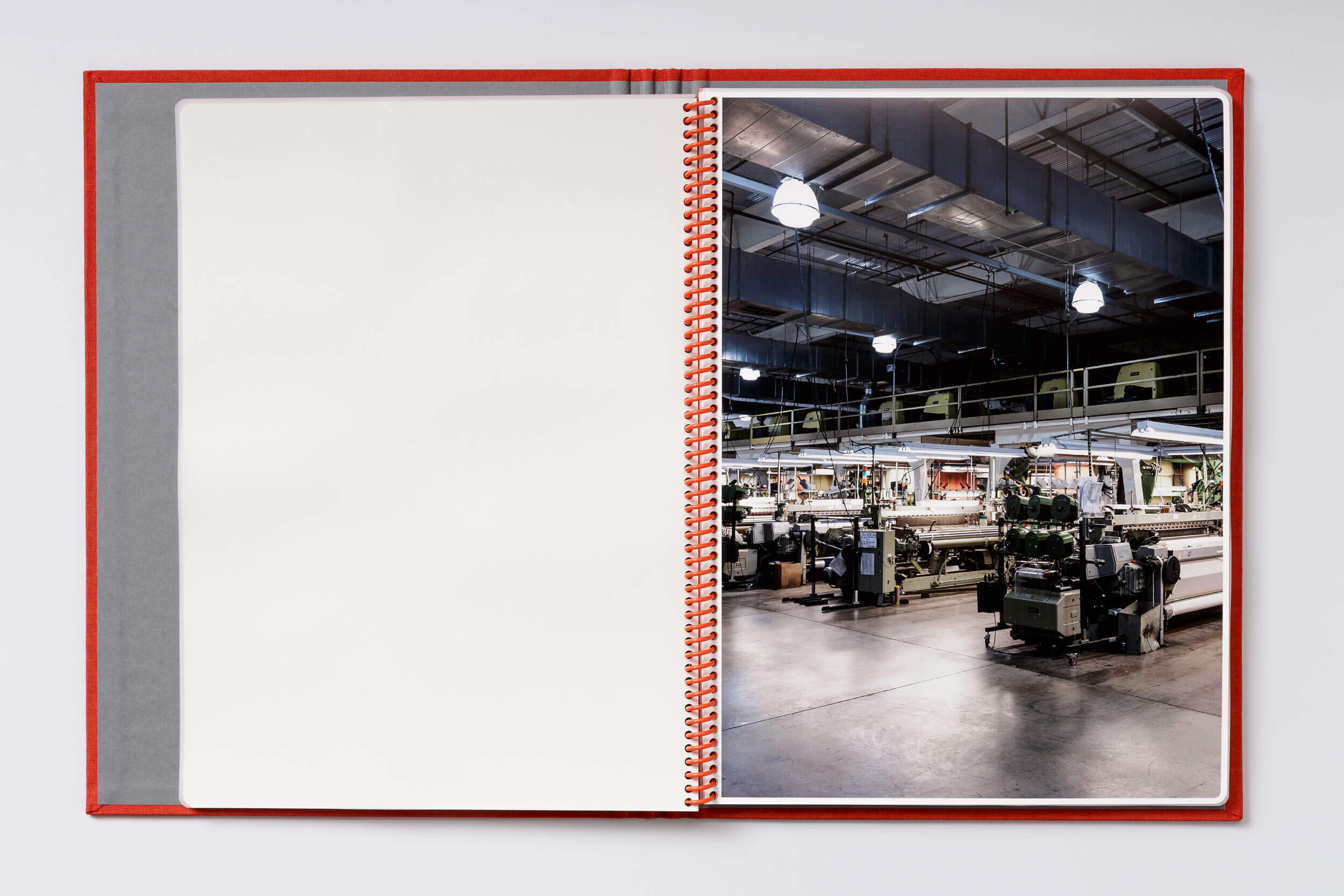



















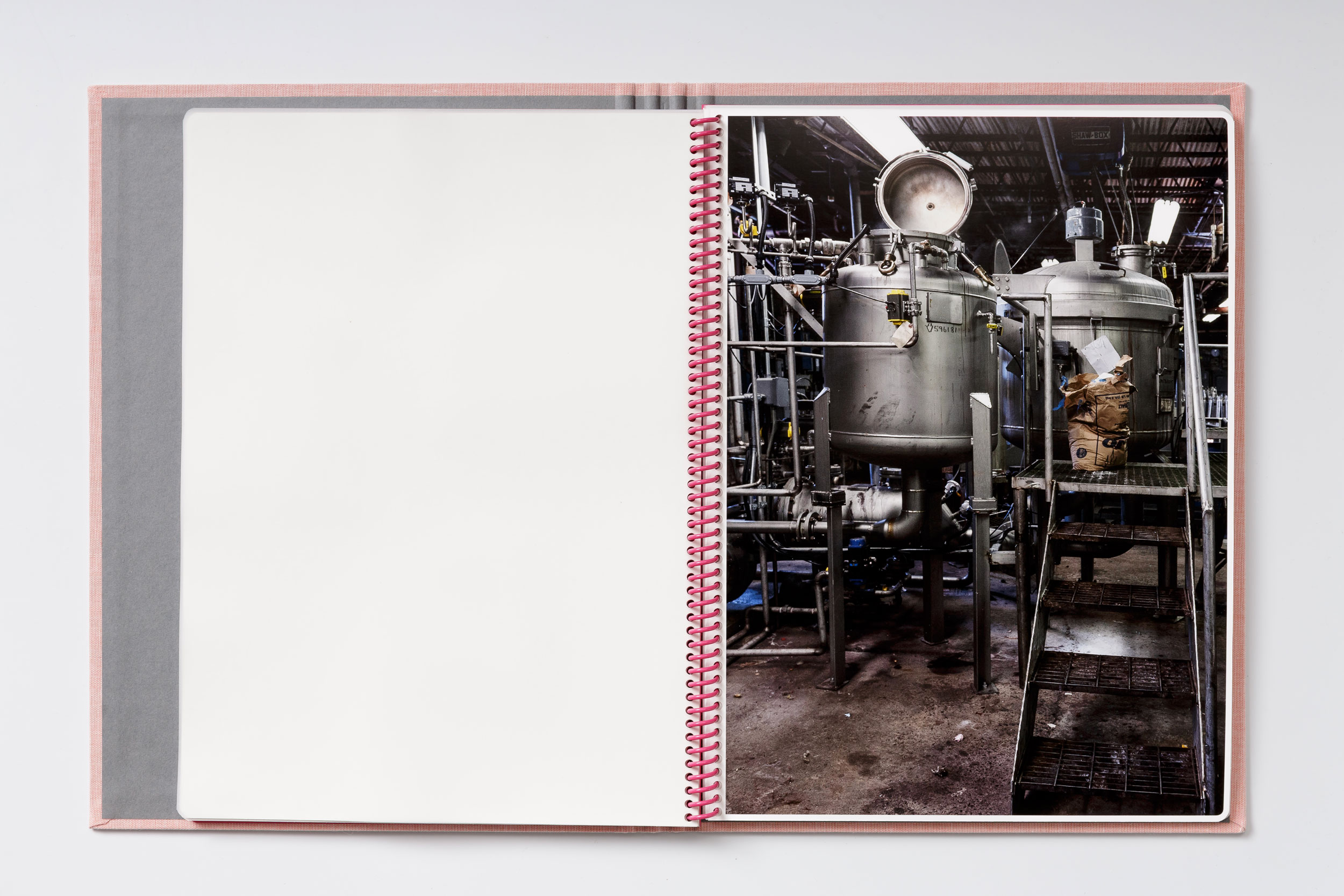
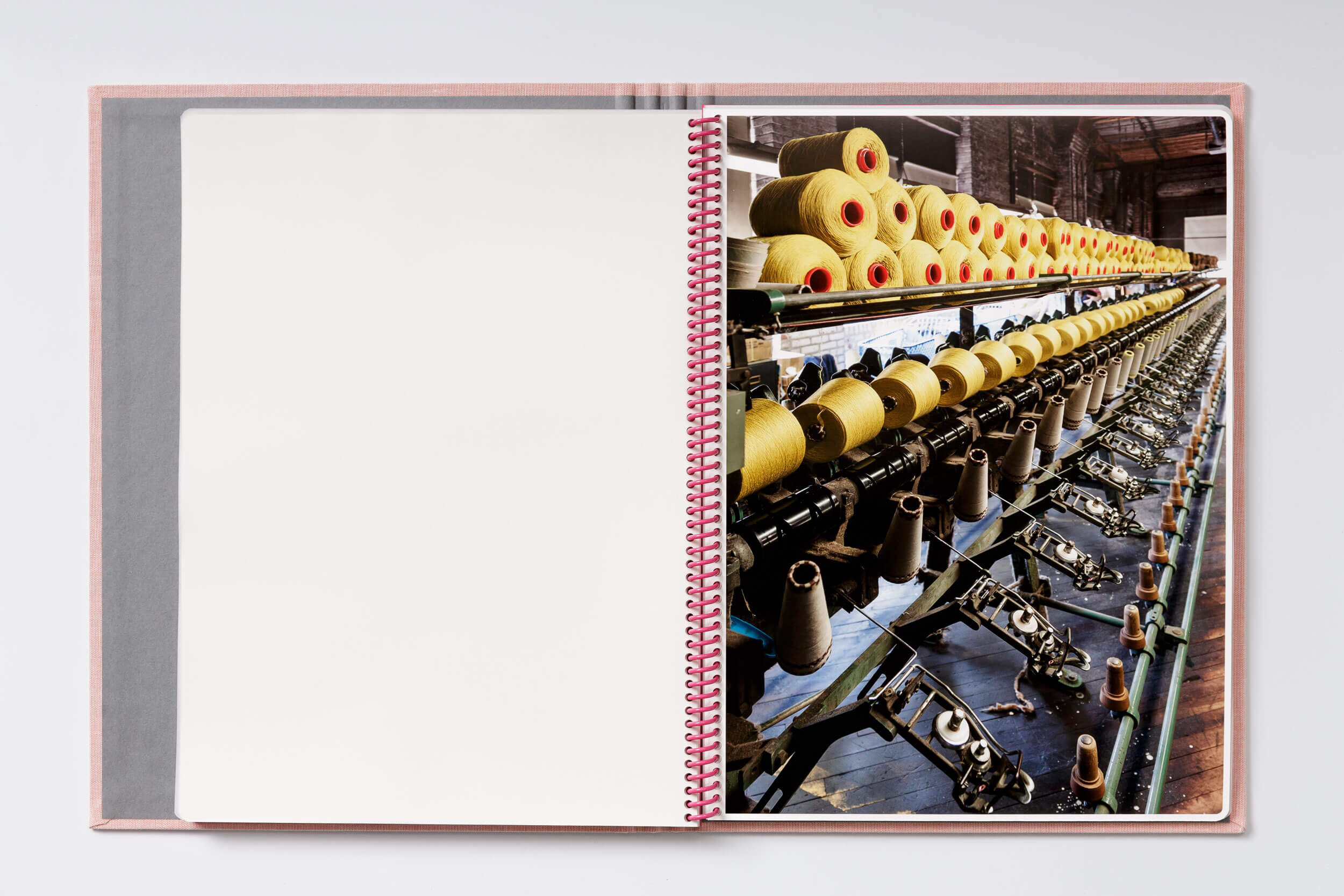










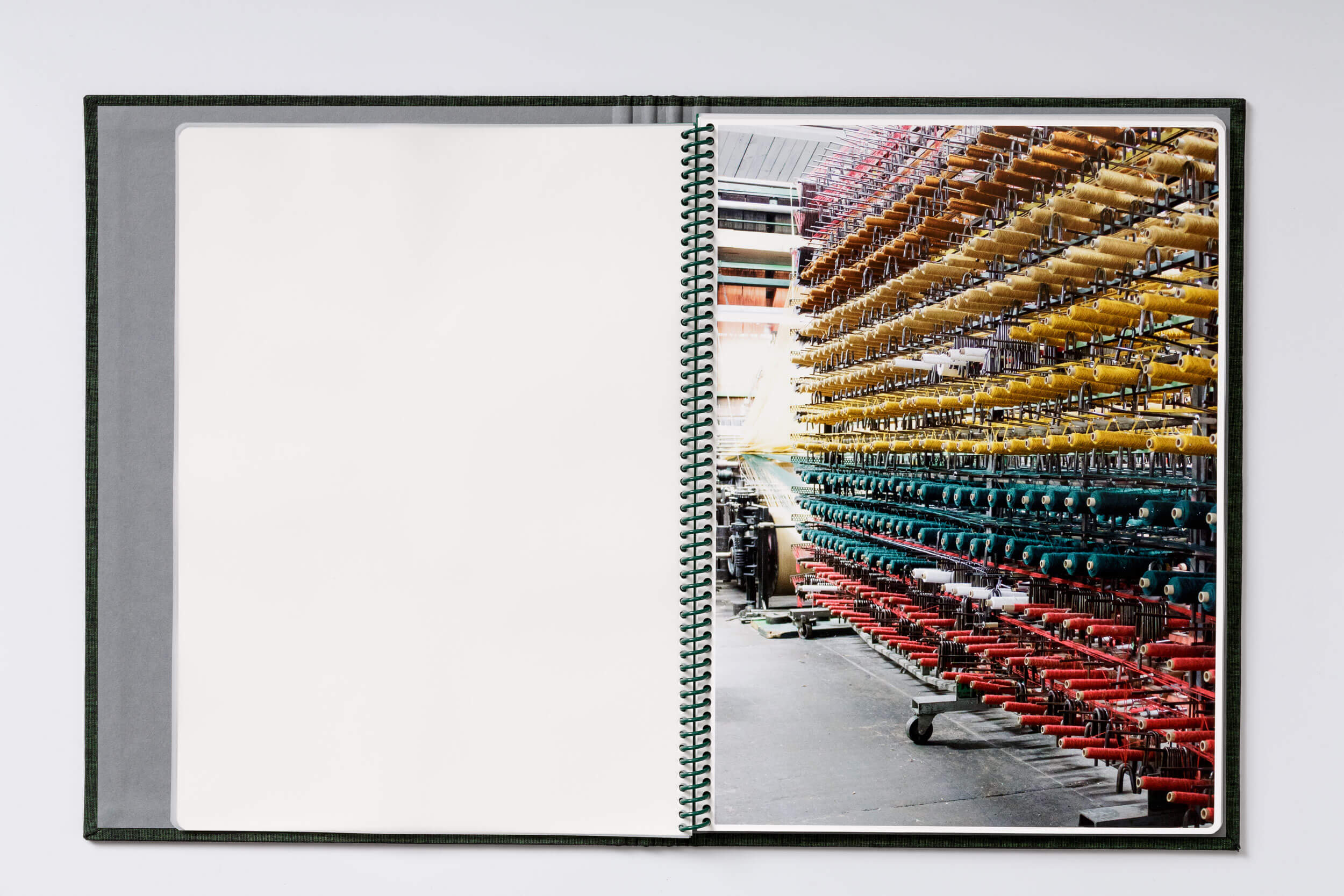






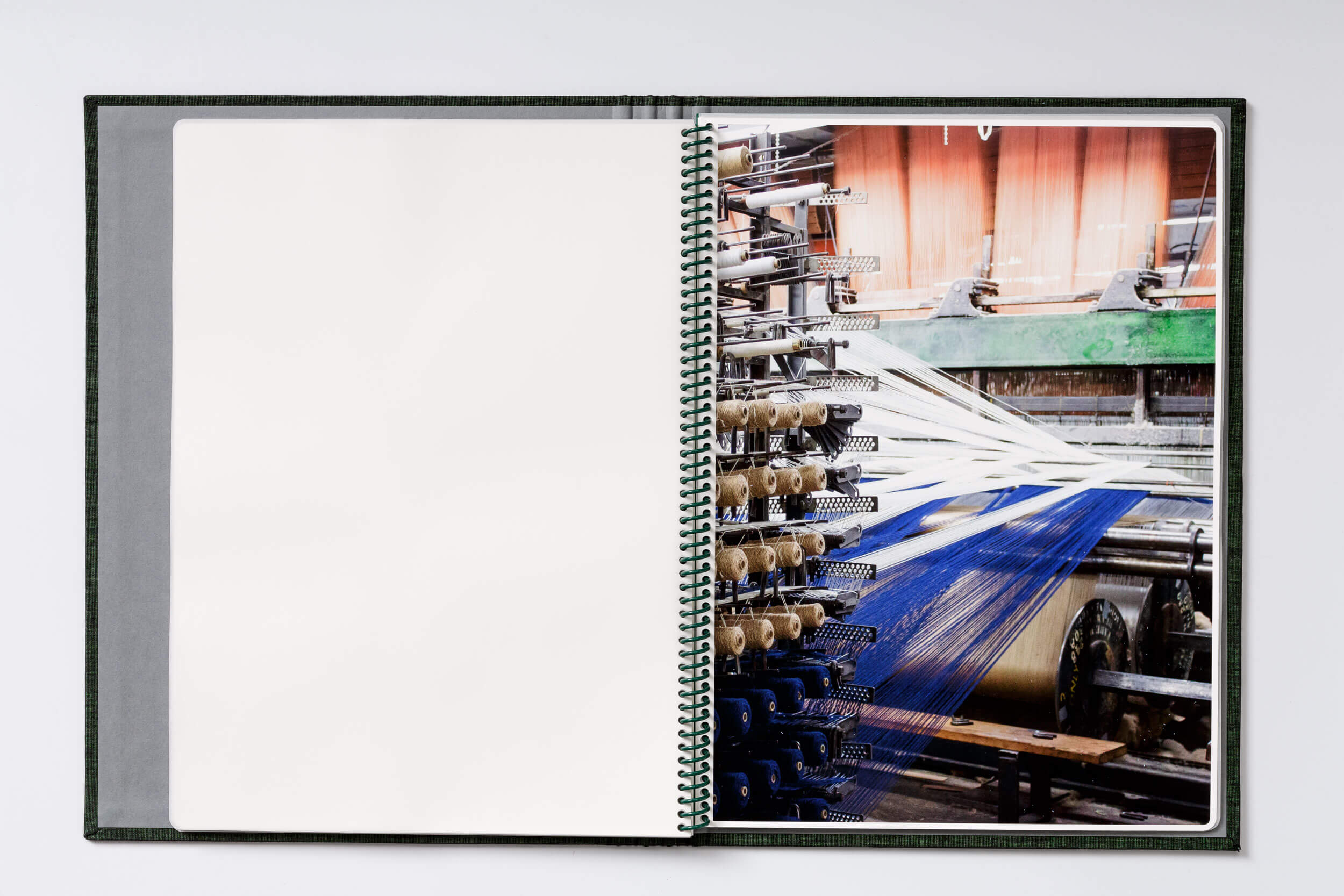
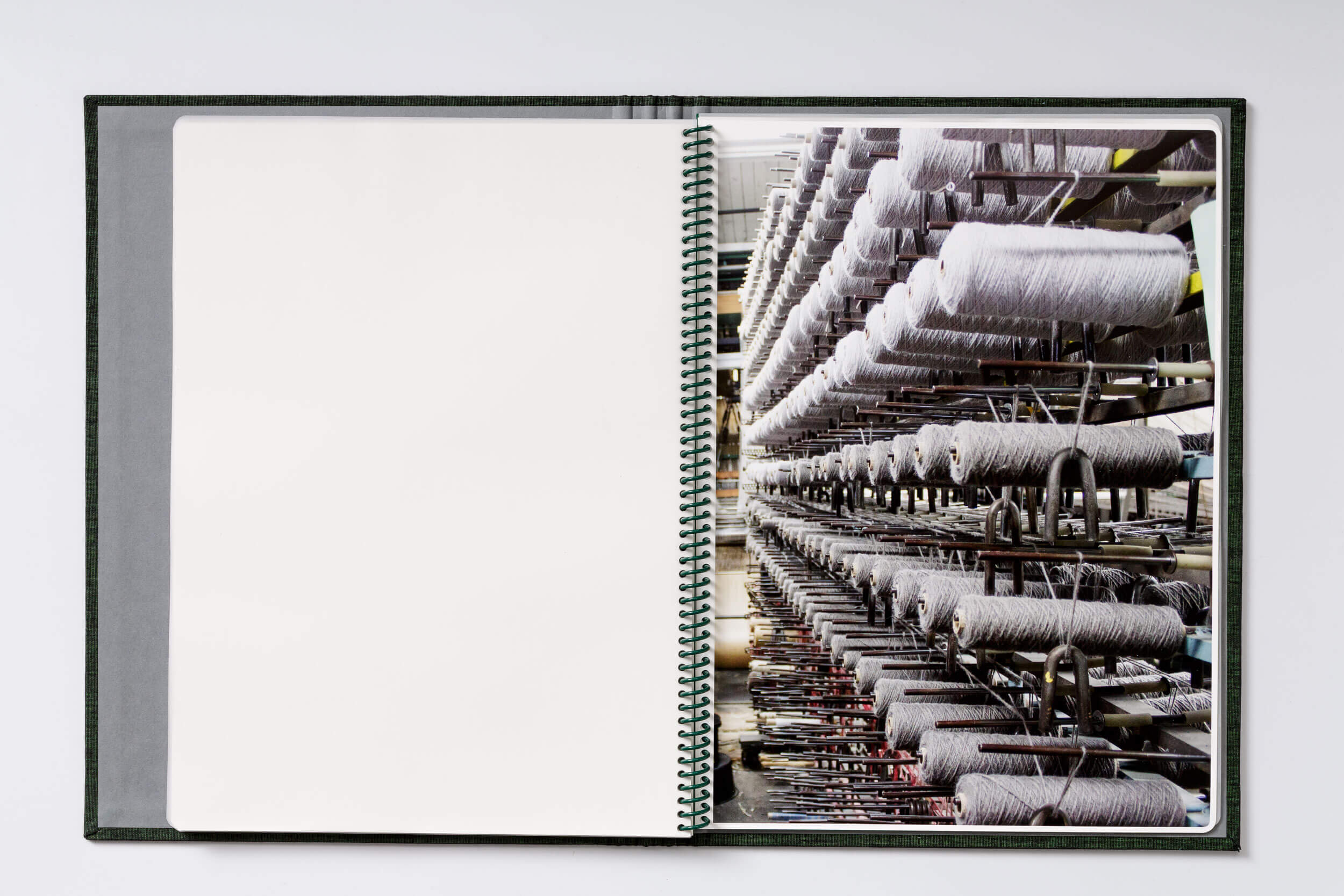




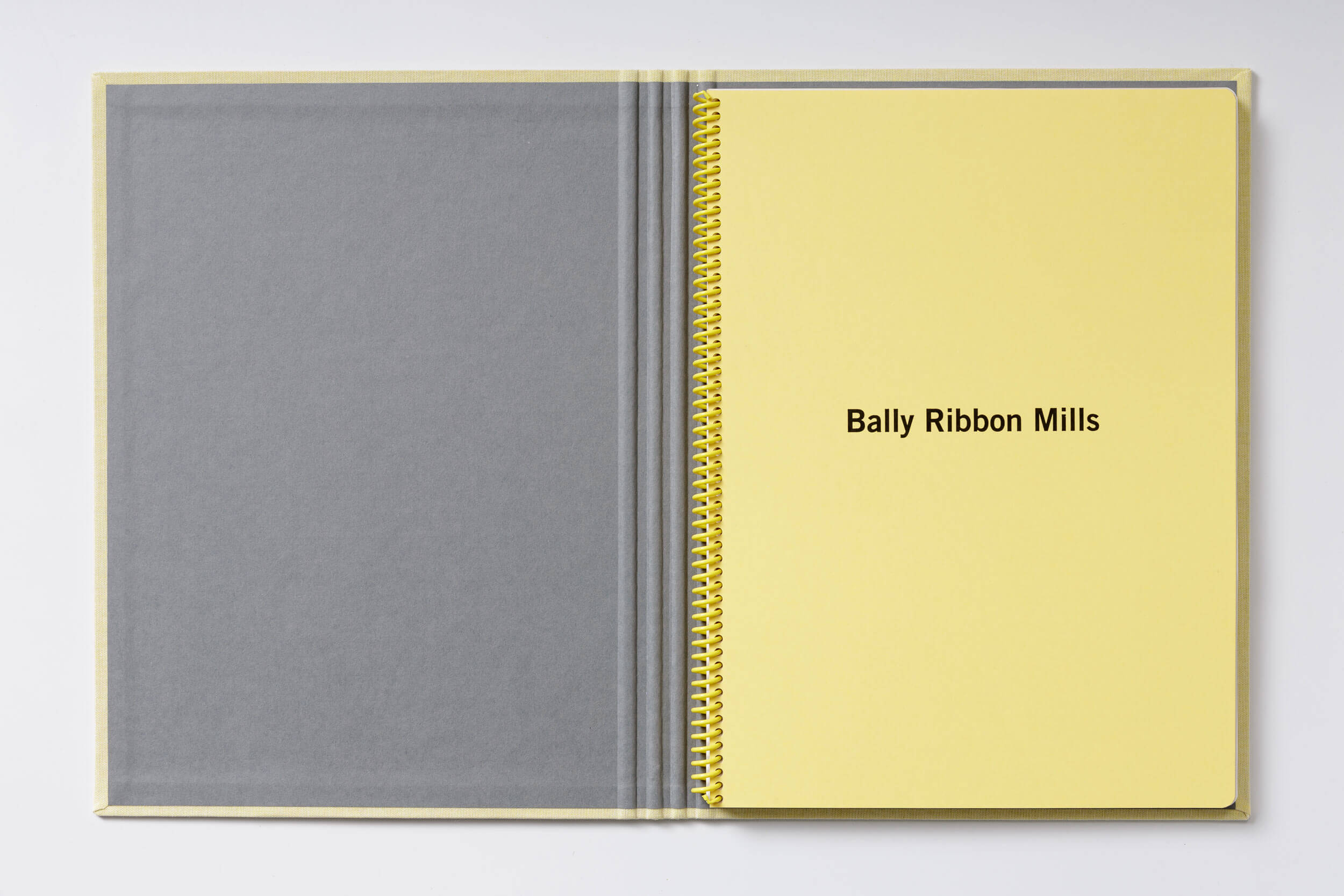
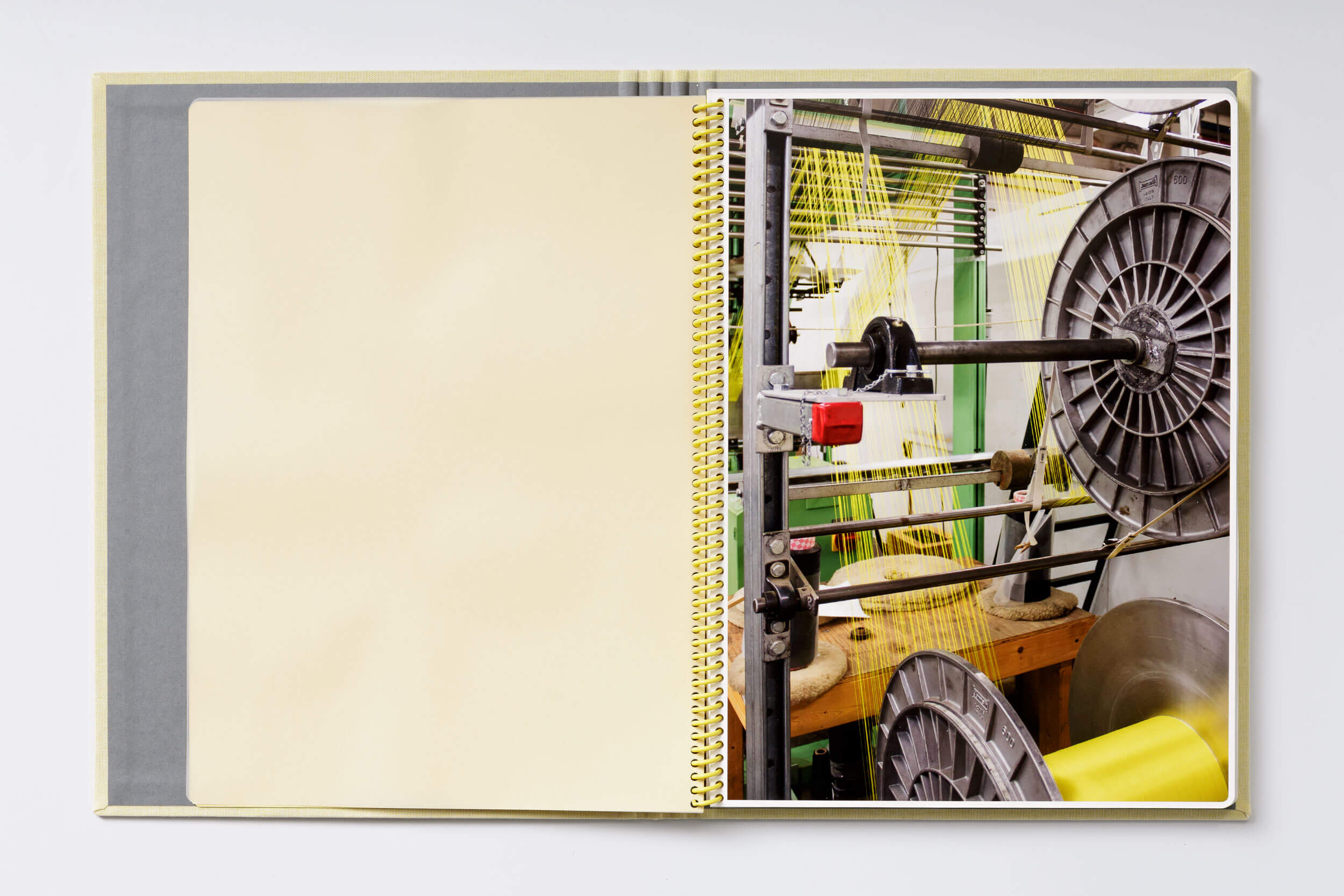
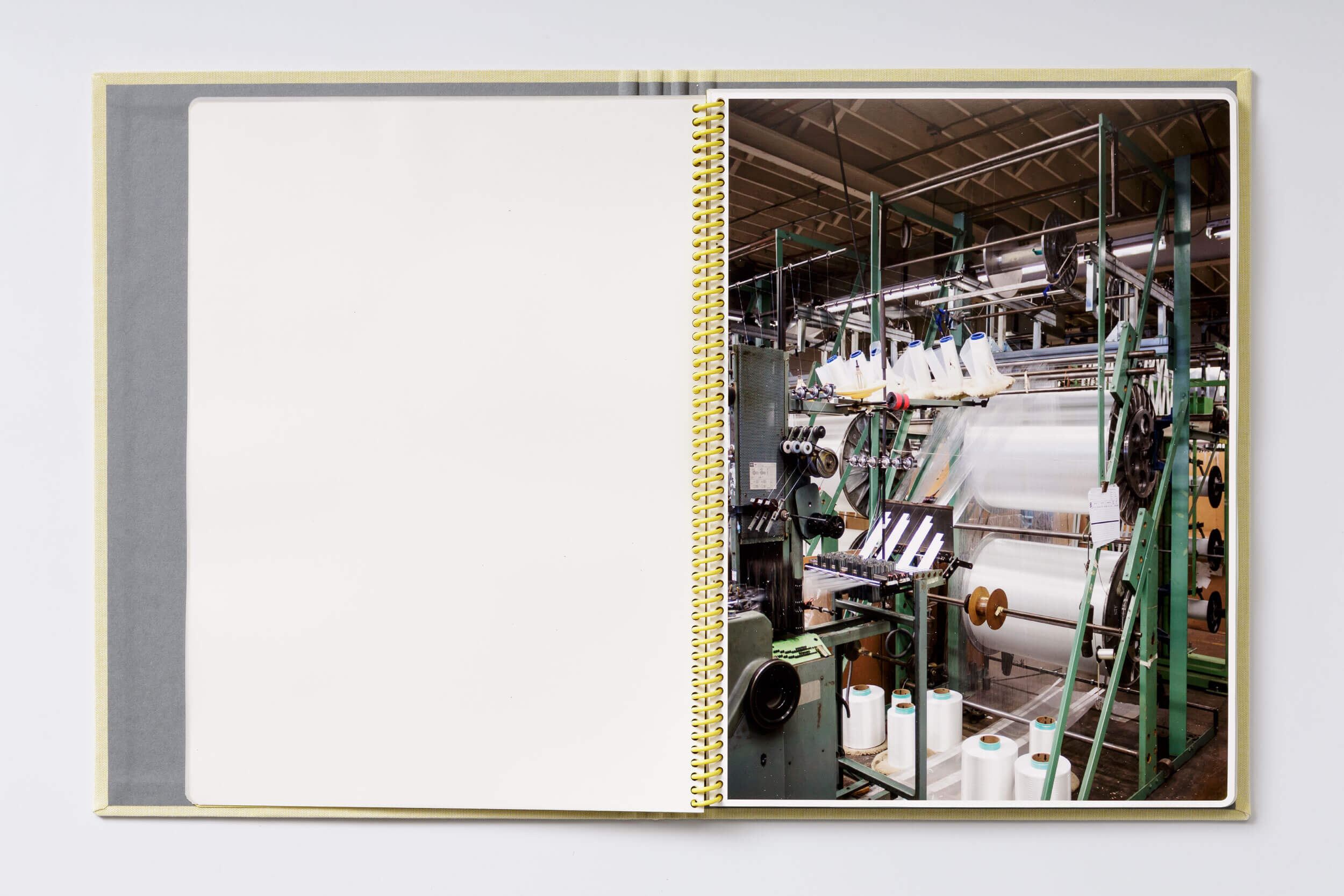




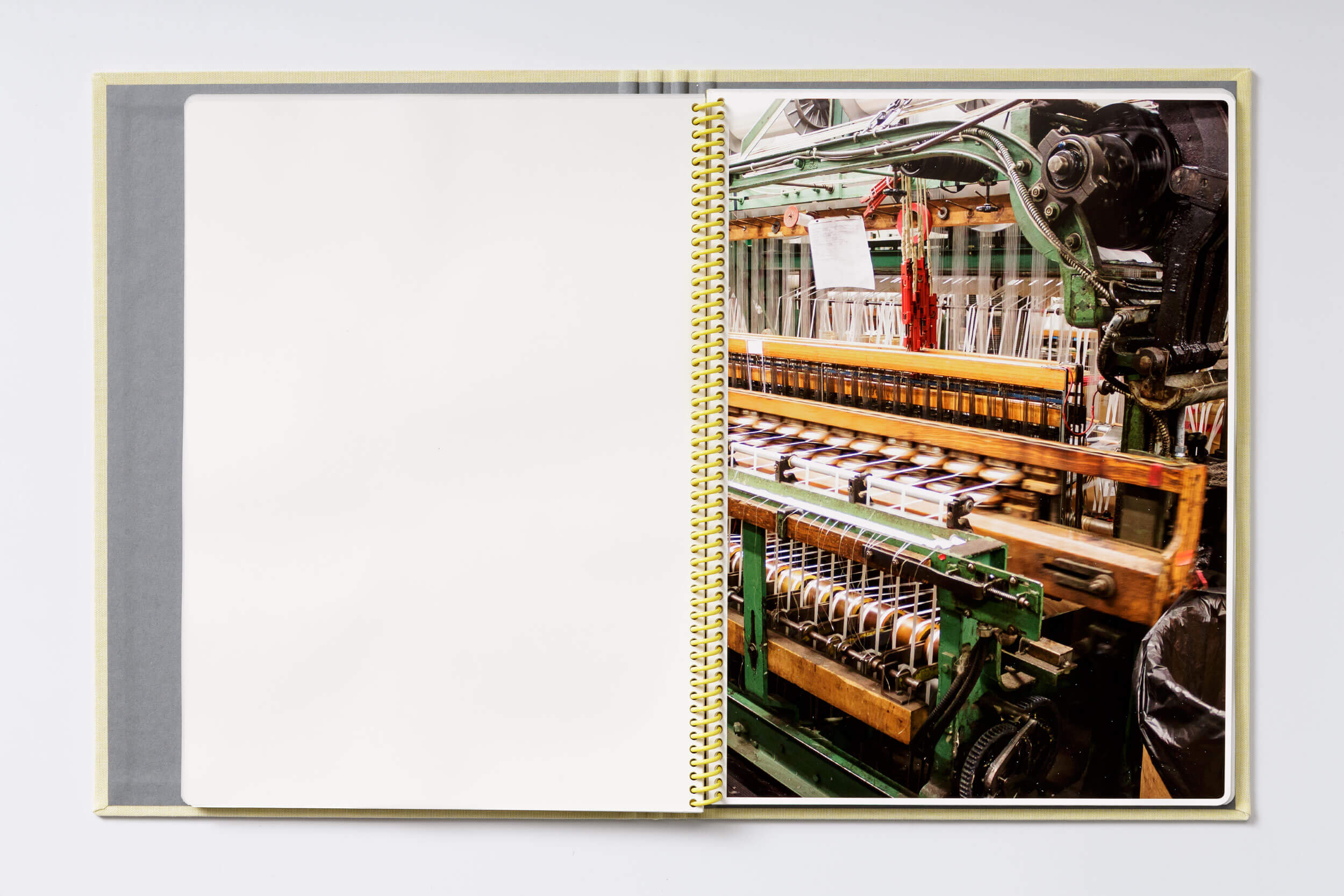



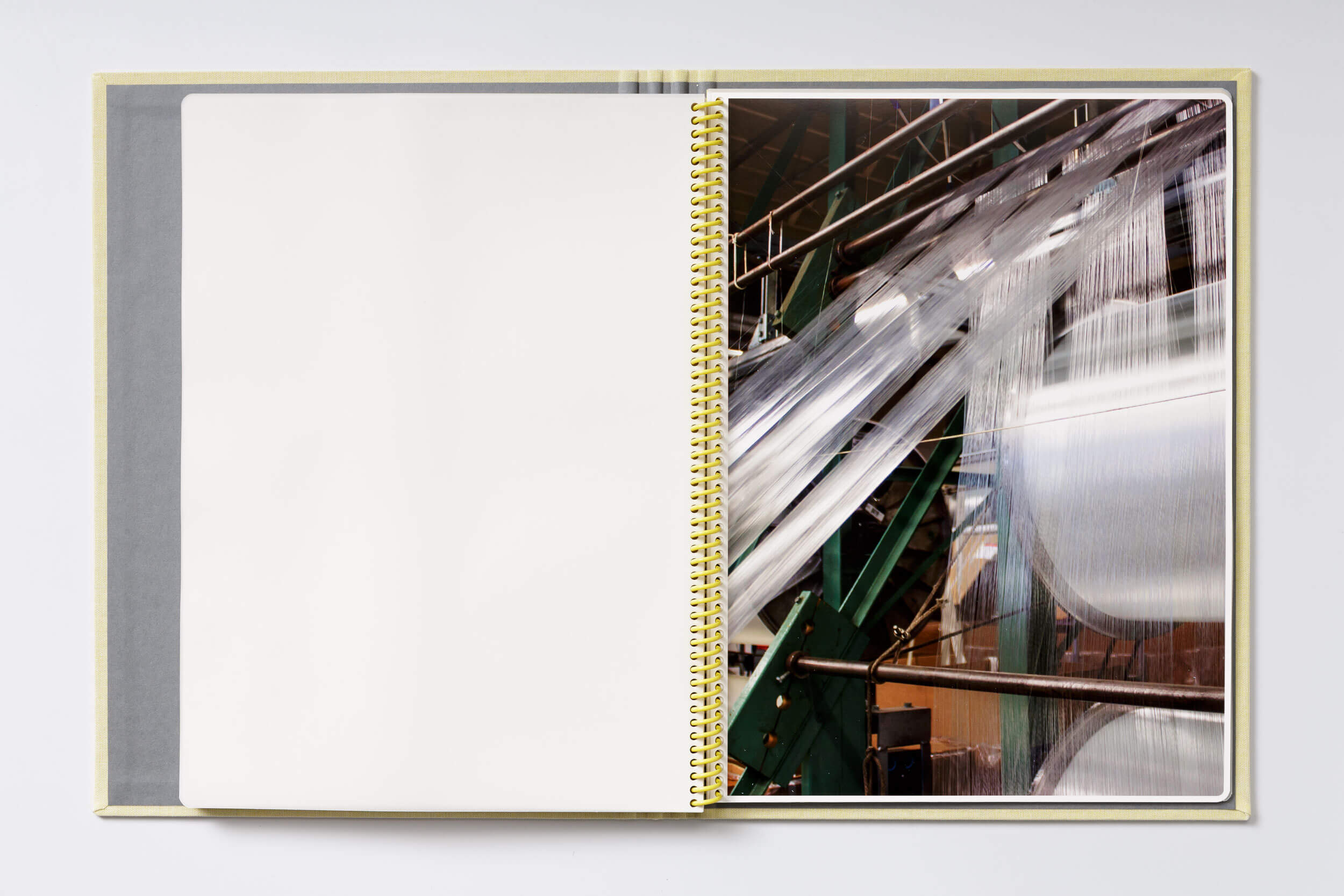




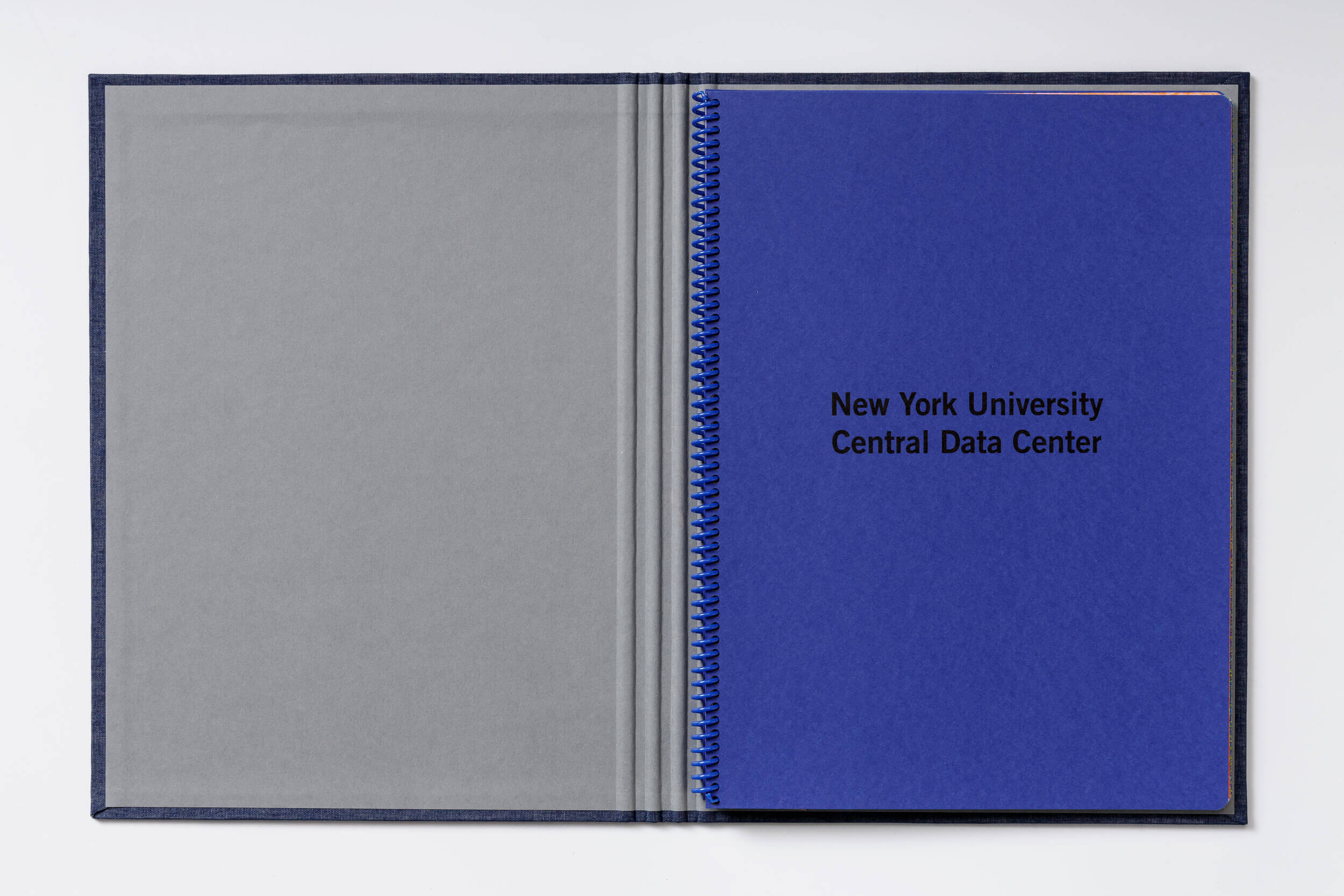











“Negative Entropy” is a series of five abstract Jacquard woven portraits of industrial and information production.
The subjects of this portrait selection are factories that employ industrial textile Jacquard looms (precursors to digital technology) and computer data center sites that comprise the infrastructure of the information economy. These works are simultaneously images and material records of their own making.
Field recordings of production sounds were made at each site, then transmuted into digital spectrogram images using linguistic audio software. Color was assigned to the spectograms, then translated into a pattern by a weaving technician to create a Jacquard fabric.
The slipcase textiles for “Negative Entropy” is a unique section of a weaving from one of the represented sites. These were woven on a Dornier Jacquard loom.
Special hard covers house each of the five volumes that are bound with colored plastic coils matching the cover's fabrics.
1/ MTL, this book features images of the factory and machines at MTL (Material Technology & Logistics), a Jacquard textile weaving mill, located in Jessup, Pennsylvania.
Photography: Carlos Avendaño
Original project commission in collaboration with The Fabric Workshop and Museum, Philadelphia, Pennsylvania
2/ Caledonian Dye Works, this book features images of the factory and machines at a fiber and dyeing factory located in Philadelphia, Pennsylvania.
Photography: Carlos Avendaño
Original project commission in collaboration with The Fabric Workshop and Museum, Philadelphia, Pennsylvania
3/ Langhorne Carpet Co., this book features images of the factory and machines at Langhorne Carpet Company, a carpet mill, Penndel, Pennsylvania.
Photography: Mika Tajima
Original project commission in collaboration with The Fabric Workshop and Museum, Philadelphia, Pennsylvania.
4/ Bally Ribbon Mills, this book features images of the factory and machines at Bally Ribbon Mills, a narrow fabrics and engineered textiles factory located in Bally, Pennsylvania.
Photography: Mika Tajima, Pål Rodenius
5/ New York University Central Data Center, Volume five features coded images of New York University’s Central ITS Data Center, the global hub and infrastructure for the university’s information technology, connecting New York City directly to Abu Dhabi and Shanghai and bypassing national network firewalls. Photography of this data center is prohibited, therefore, the images are represented here as Jacquard punched cards which were translated from a digital photo taken of the site. These punched cards were made by a Jacquard card cutter at Langhorne Carpet Mill. Interleaved between the punched cards are spectrograms images made from audio recordings made at the data center.
Mika Tajima (b. 1975) employs sculpture, painting, video, music, and performance, often drawing on contradictions in modernist design and architecture to consider how the performing subject (e. g., speaker, dancer, designer, factory worker, musician, filmmaker) is constructed in spaces in which material objects outline action and engagement. Tajima's most recent work extends her interrogation of the built environment and the maximized performer to the global flow of life energies sought by unraveling systems.
The subjects of this portrait selection are factories that employ industrial textile Jacquard looms (precursors to digital technology) and computer data center sites that comprise the infrastructure of the information economy. These works are simultaneously images and material records of their own making.
Field recordings of production sounds were made at each site, then transmuted into digital spectrogram images using linguistic audio software. Color was assigned to the spectograms, then translated into a pattern by a weaving technician to create a Jacquard fabric.
The slipcase textiles for “Negative Entropy” is a unique section of a weaving from one of the represented sites. These were woven on a Dornier Jacquard loom.
Special hard covers house each of the five volumes that are bound with colored plastic coils matching the cover's fabrics.
1/ MTL, this book features images of the factory and machines at MTL (Material Technology & Logistics), a Jacquard textile weaving mill, located in Jessup, Pennsylvania.
Photography: Carlos Avendaño
Original project commission in collaboration with The Fabric Workshop and Museum, Philadelphia, Pennsylvania
2/ Caledonian Dye Works, this book features images of the factory and machines at a fiber and dyeing factory located in Philadelphia, Pennsylvania.
Photography: Carlos Avendaño
Original project commission in collaboration with The Fabric Workshop and Museum, Philadelphia, Pennsylvania
3/ Langhorne Carpet Co., this book features images of the factory and machines at Langhorne Carpet Company, a carpet mill, Penndel, Pennsylvania.
Photography: Mika Tajima
Original project commission in collaboration with The Fabric Workshop and Museum, Philadelphia, Pennsylvania.
4/ Bally Ribbon Mills, this book features images of the factory and machines at Bally Ribbon Mills, a narrow fabrics and engineered textiles factory located in Bally, Pennsylvania.
Photography: Mika Tajima, Pål Rodenius
5/ New York University Central Data Center, Volume five features coded images of New York University’s Central ITS Data Center, the global hub and infrastructure for the university’s information technology, connecting New York City directly to Abu Dhabi and Shanghai and bypassing national network firewalls. Photography of this data center is prohibited, therefore, the images are represented here as Jacquard punched cards which were translated from a digital photo taken of the site. These punched cards were made by a Jacquard card cutter at Langhorne Carpet Mill. Interleaved between the punched cards are spectrograms images made from audio recordings made at the data center.
Mika Tajima (b. 1975) employs sculpture, painting, video, music, and performance, often drawing on contradictions in modernist design and architecture to consider how the performing subject (e. g., speaker, dancer, designer, factory worker, musician, filmmaker) is constructed in spaces in which material objects outline action and engagement. Tajima's most recent work extends her interrogation of the built environment and the maximized performer to the global flow of life energies sought by unraveling systems.



Details from the inside pages of “Negative Entropy”